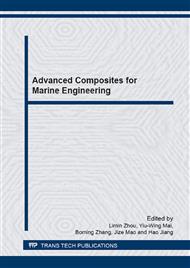p.3
p.10
p.19
p.28
p.35
p.43
p.54
p.63
Composite Wind Turbine Blade Aerodynamic and Structural Integrated Design Optimization Based on RBF Meta-Model
Abstract:
An aerodynamic and structural integrated design optimization method of composite wind turbine blade based on multidisciplinary design optimization (MDO) is presented. The optimization aims to reduce the mass of blade under some constraints, including the power and deflection at the rated wind speed, and the strength and deflection under ultimate case. The design variables include parameters both in aerodynamic and structural disciplines. In order to keep the shape of blade smooth,the chord and twist distributions are controlled by the Bezier function in the optimization process. 3D parameterization of blade was carried out in Finite Element Analysis (FEA) software. Considering tip-loss and hub-loss, aerodynamic analysis was performed by using Blade Element Momentum (BEM) theory. Finite Element Method (FEM) was used in structural analysis. Multi-island Genetic Algorithm (MIGA) which has excellent exploration abilities was used to optimize wind turbine blade. RBF meta-model was construct to approximate the accurate structural analysis model by Optimal Latin Hypercube DOE sample points. An example was given to verify the method in this paper. The result shows that the optimization method has good optimization efficiency and the RBF meta-model could reduce the computational cost a lot.
Info:
Periodical:
Pages:
10-18
Citation:
Online since:
March 2015
Authors:
Keywords:
Price:
Сopyright:
© 2015 Trans Tech Publications Ltd. All Rights Reserved
Share:
Citation:


